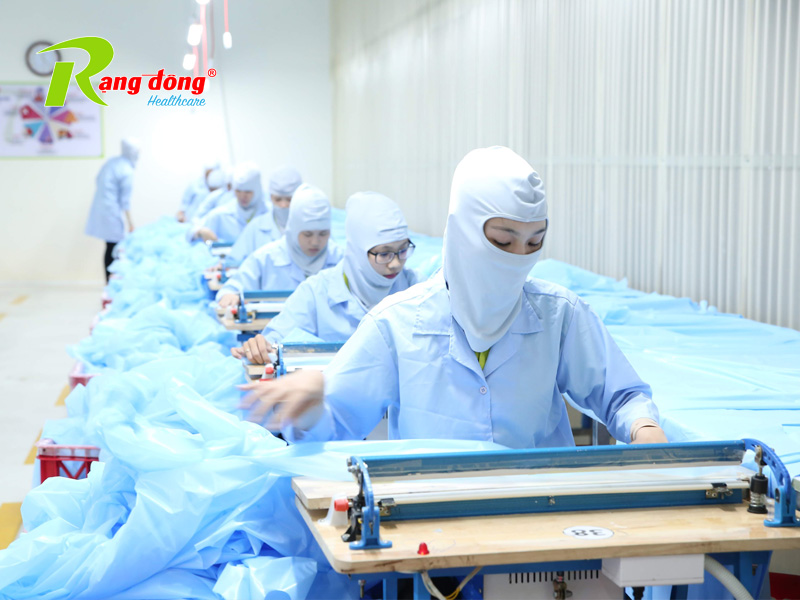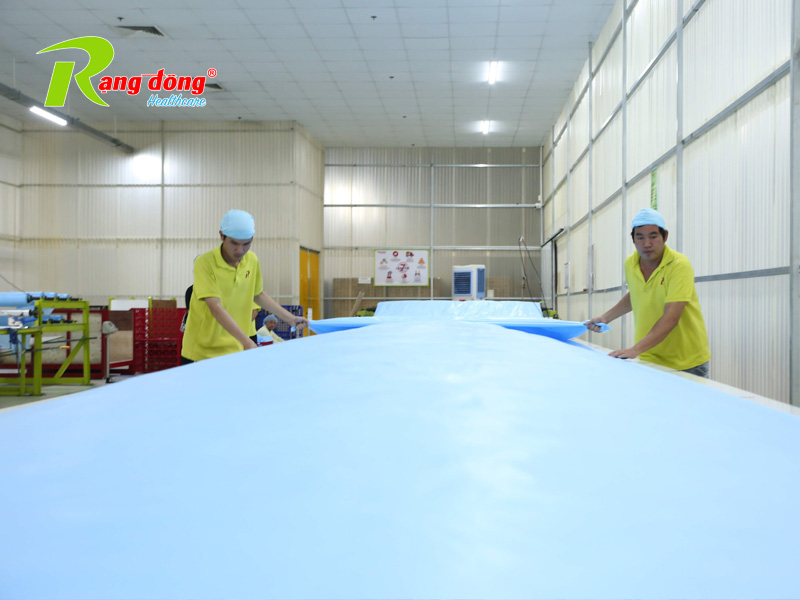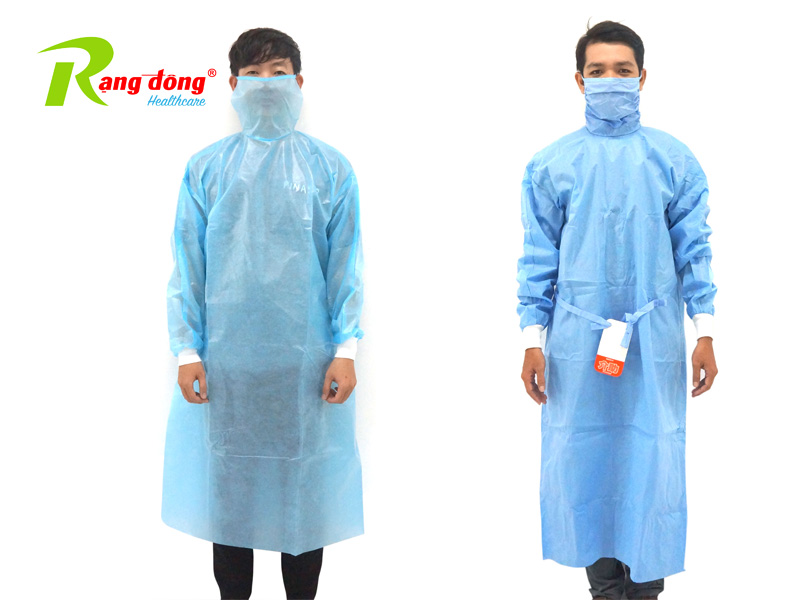The best material for surgical gowns? Product information 11/05/2023
Surgical gowns are a type of garment designed to protect the bodies of healthcare workers during surgical procedures or patient treatments. Surgical gowns can be made from various materials such as non-woven fabric, cotton, polyester, etc. Depending on the intended use and the requirements of medical regulations, surgical gowns may have different features such as antibacterial properties, fluid resistance, sweat absorption, etc. Surgical gowns are considered an essential part of the protective clothing for healthcare workers to ensure patient safety and minimize the risk of infection.

Surgical gowns are a product of Rang Dong company, manufactured based on strict quality control processes and meeting international medical standards.
The importance of surgical gowns in the healthcare environment
Surgical gowns are a crucial part of the protective clothing for healthcare workers in surgical and medical environments. The importance of surgical gowns includes:
- Protecting the patient’s health: Surgical gowns help minimize the risk of infection and prevent the spread of bacteria, viruses, and other disease-causing agents from the wearer to the patient.
- Protecting the health of healthcare workers: Surgical gowns help prevent exposure to disease-causing agents and protect healthcare workers from fluids and chemicals during patient contact.
- Creating a professional and trustworthy image: Surgical gowns contribute to a professional, respectful, and trustworthy image for patients. This can help reduce anxiety and provide comfort to patients during treatment.

Therefore, surgical gowns are an indispensable part of the healthcare environment, and the choice of material and quality for surgical gowns is crucial to ensure effectiveness in protecting the health of patients and healthcare workers.
Factors to consider when choosing material for surgical gowns
When choosing material for surgical gowns, consider the following factors:
- Waterproof ability: Surgical gowns need to have good waterproof ability to ensure the wearer does not get stuck in body fluids or surgical fluids.
- Breathability: The material of surgical gowns should ensure breathability to help the wearer feel comfortable and not overheated.
- Antistatic ability: Surgical gowns need to have antistatic ability to minimize the impact of static electricity on surgical outcomes.
- Resistance to chemicals: Surgical gowns need to withstand chemicals such as disinfectant solutions to ensure safety for the wearer.
- Durability: The material of surgical gowns needs to ensure high durability so that the gowns can be used for an extended period without frequent replacement.
- Softness: The material of surgical gowns needs to ensure softness to help the wearer feel comfortable and not uncomfortable.
- Reusability: The material of surgical gowns needs to meet standards for reusable use while maintaining safety and effectiveness.
Commonly used materials for surgical gowns
There are many types of materials used to produce surgical gowns, including common materials such as:
- Non-woven fabric: A popular and widely used material in healthcare. Non-woven fabric has antibacterial properties, sweat absorption, and breathability.
- Cotton: A natural material with good breathability and sweat absorption, although it lacks waterproof ability.
- Polyester: A synthetic material with good waterproof ability, easy to clean, and quick-drying, although not as breathable as cotton.
Other materials such as nylon, spandex, etc., are also used for surgical gowns depending on the intended use and regulatory requirements in the medical field.
Rang Dong Healthcare’s surgical gowns are made from polypropylene (PP), known for its waterproof properties and excellent bacterial barrier. It is designed with standard stitching and elastic cuffs, allowing the wearer to perform tasks easily during surgery.

Surgical gowns are a crucial part of the protective clothing for healthcare workers during surgeries or medical procedures. Specifically designed to ensure safety for patients and users, including features such as fluid resistance, antistatic ability, chemical resistance, breathability, and durability.
Surgical gowns help prevent bacteria and fluids from transferring between the patient and the user, minimizing the risk of infection during treatment. Additionally, they have dust-resistant features, protecting the user from harmful agents in the external environment.
Non-woven fabric is the best choice for surgical gowns due to its superior properties. It has high antibacterial capabilities, inhibiting the growth of bacteria and fungi during use. It also has excellent sweat absorption, keeping the user comfortable and dry during work. Finally, non-woven fabric is easy to clean, can be washed multiple times, and is resistant to chemicals such as disinfectants and detergents. This ensures sustainability and durability of surgical gowns, reducing costs for healthcare facilities. For these reasons, non-woven fabric is the best choice for surgical gowns.






